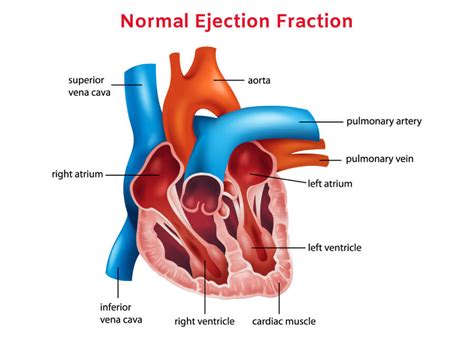lv funktion ef 40 | Ejection Fraction: What It Is, Types and Normal Range lv funktion ef 40 Ejection fraction typically refers to the left side of the heart. It shows how much . Ieiet - Inbox Login. Ienākt. Aizmirsāt paroli? vai. Pirmo reizi Inbox.lv portālā? Reģistrēties. Jauna lietotāja un pastkastītes reģistrācija portālā inbox.lv.
0 · Ejection Fraction: What It Is, Types and Normal Range
1 · Ejection Fraction: Normal Range, Low Range, and Treatment
Top 10 Rarest Mounts in WoW. In this post, we’re going to cover the complete WOW expansions list in order and give a rundown of what each expansion added to the game. Update November 2023: Blizzard announced a trilogy for the next three expansions at BlizzCon, which will be titled the Worldsoul Saga.
Ejection fraction typically refers to the left side of the heart. It shows how much . An ejection fraction measurement under 40 percent might be evidence of heart failure or cardiomyopathy. In severe cases, EF can be even lower than 40. Learn ways to improve your low ejection fraction. An ejection fraction measurement higher than 75 percent could indicate a heart condition such as hypertrophic cardiomyopathy.
Ejection fraction typically refers to the left side of the heart. It shows how much oxygen-rich blood is pumped out of the left ventricle to most of the body’s organs with each contraction. LVEF helps determine the severity of dysfunction on the left side of the heart. An ejection fraction below 40 percent is classified as heart failure with a reduced ejection fraction (HFrEF). It occurs when one of your heart’s chambers isn’t able to contract properly. Ejection fraction is measured as a percentage of the total amount of blood in your heart that is pumped out with each heartbeat. A normal ejection fraction is 50 percent or higher. An ejection fraction below 40 percent means your heart isn’t pumping enough blood and may be . A left ventricle (LV) ejection fraction of about 50% to 70% is categorized as normal. A mildly reduced LV ejection fraction is usually between 41% and 49%. A reduced LV ejection fraction is usually 40% or less.
Ejection Fraction: What It Is, Types and Normal Range
A normal result usually falls between 50% and 70%, according to the American Heart Association. People with a reduced ejection fraction have one type of the condition. It’s called heart failure.
best panerai rubber strap
100. EF = ejection fraction. Left Ventricular Ejection Fraction (LVEF) Your left ventricle pumps blood that's been enriched with oxygen through your aorta to the rest of your body. The LVEF can show the extent of.
LV GLS is useful to detect future cardiotoxicity among patients receiving cardiotoxic chemotherapy, and to detect subclinical LV systolic dysfunction among family members of patients with heritable cardiomyopathies. Left ventricular ejection fraction (LVEF) is the central measure of left ventricular systolic function. LVEF is the fraction of chamber volume ejected in systole (stroke volume) in relation to the volume of the blood in the ventricle at the end of diastole (end-diastolic volume). An ejection fraction measurement under 40 percent might be evidence of heart failure or cardiomyopathy. In severe cases, EF can be even lower than 40. Learn ways to improve your low ejection fraction. An ejection fraction measurement higher than 75 percent could indicate a heart condition such as hypertrophic cardiomyopathy.
Ejection fraction typically refers to the left side of the heart. It shows how much oxygen-rich blood is pumped out of the left ventricle to most of the body’s organs with each contraction. LVEF helps determine the severity of dysfunction on the left side of the heart. An ejection fraction below 40 percent is classified as heart failure with a reduced ejection fraction (HFrEF). It occurs when one of your heart’s chambers isn’t able to contract properly. Ejection fraction is measured as a percentage of the total amount of blood in your heart that is pumped out with each heartbeat. A normal ejection fraction is 50 percent or higher. An ejection fraction below 40 percent means your heart isn’t pumping enough blood and may be . A left ventricle (LV) ejection fraction of about 50% to 70% is categorized as normal. A mildly reduced LV ejection fraction is usually between 41% and 49%. A reduced LV ejection fraction is usually 40% or less.
A normal result usually falls between 50% and 70%, according to the American Heart Association. People with a reduced ejection fraction have one type of the condition. It’s called heart failure.100. EF = ejection fraction. Left Ventricular Ejection Fraction (LVEF) Your left ventricle pumps blood that's been enriched with oxygen through your aorta to the rest of your body. The LVEF can show the extent of.
LV GLS is useful to detect future cardiotoxicity among patients receiving cardiotoxic chemotherapy, and to detect subclinical LV systolic dysfunction among family members of patients with heritable cardiomyopathies.

No šodienas mājaslapā www.enudiena.lv sāksies ēnu devēju pieteikšanās un vakanču reģistrēšana Ēnu dienai, kas turpināsies līdz 31.janvārim. Skolēnu pieteikšanās vakancēm Ēnu dienai būs iespējama no 22.janvāra līdz 31.janvārim.
lv funktion ef 40|Ejection Fraction: What It Is, Types and Normal Range




























